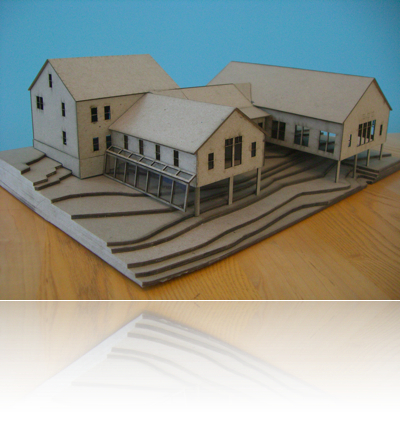Energy Efficient Building Research for
Westampton Library
Buildings require a significant amount of energy for the heating, cooling, air quality control, and lighting expected for comfortable conditions. I first became aware of this from my first engineering course, in which I built a model house designed to maintain a certain temperature on the coldest December day in New England. This project taught me the fundamental and simple physics necessary for designing a green building.
I am very interested in sustainable design and had the opportunity this year to partake in energy efficiency research for the town of Westhampton, MA. Last year, several students were contacted by the town of Westhampton for assistance in designing their new library. One of the many goals for the building was to make it as energy efficient as possible. This semester I have carried the students’ work by continuing to research and calculate how to design an energy efficient building. I have written several energy analysis reports to provide the committee information on alternative building materials, how to orientate the building, window placement, sustainable heat solutions (such as an attached greenhouse), and more. I have recently learned how to program the energy use (using MATLAB), based off previously made programs using local climate conditions and available solar energy. This allows me to provide quick feedback to the committee so that I can show how design changes affect fuel cost. I have improved my presentation skills since I have attended several library committee meetings and presented my reports and participated in committee discussions. I recently made a simple 3-D cardboard model of the latest design of the library (using AutoCAD and a laser cutter machine) to show how a greenhouse structure could be attached as a heat source (see image below).
In addition, I have conducted several experiments to learn how greenhouses can function as heat sources. The image above is a sample model of a greenhouse, simply made from plastic bags, for which I tested how air channel size and air flow would change the output heat. This simple design produced at temperature difference of 20 degrees in its first trial. I hope to carry on this research and learn how to improve the design, eventually making a product that is economical and can be used to heat homes.
Early 3-D model of Westhampton Library Prototype Inexpensive-greenhouse experiment
To learn more about the Westhampton Library and help them reach their fundraising goals, please visit
Smith College Special Studies


